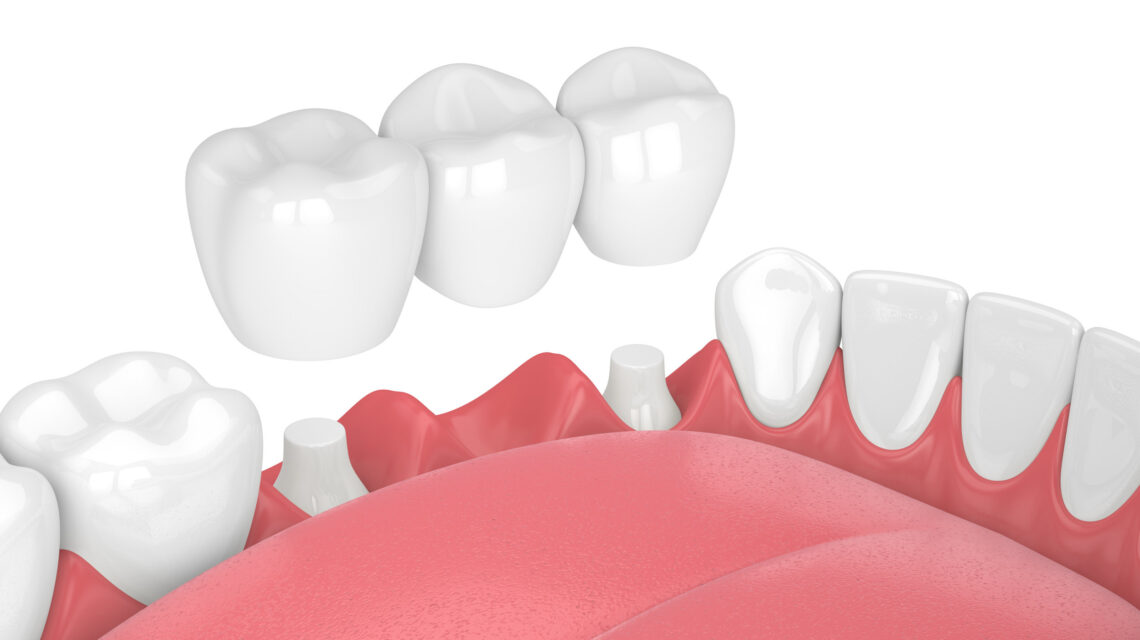Dental bridges are replacement teeth that effectively bridge the gap between missing teeth in order to restore a patient’s smile and confidence.
If you have damaged or missing teeth, then dental bridges in Ealing can provide you with a smile which both looks good and feels good. Unlike traditional dentures, dental bridges retain the strength in your gum, so you can bite with confidence as well as show off your smile!
The basics of dental bridges
Dental bridges are whole arches of prosthetic teeth which are fixed into the gum by special dental screws (known as dental implants). These screws basically take the place of tooth roots and help to preserve the structure in the gum and jawbone.
Types of dental bridges
The two main types of dental bridges are known as “all-on-four” and “all-on-six”. The numbers refer to the number of implants used to hold the dental bridge in place. All-on-four dental implants have two cantilevered (tilted) implants at the front. Tilting the implants adds extra security and helps to compensate for the fact that all-on-four dental implants have fewer implants to hold them in place than all-on-six dental implants.
In principle, both all-on-four dental bridges and all on six dental bridges can be used on either jaw. In practice, all-on-four dental bridges tend to be used on the lower jaw. All-on-six dental bridges tend to be used for the upper jaw. This is because the upper jaw has more of the “bite force” and hence can benefit from the strength of the two extra dental implants.
There are, however, no hard-and-fast rules about this. A good dentist in Ealing will, therefore, take the time to discuss your needs, wants and budget so you get the solution which works best for you.
Fitting a dental bridge
There are three main stages to fitting a dental bridge. The first is when you go to an Ealing dental clinic for a consultation and agree on what you want. The second is when you go to have the implants (screws) fitted.
This is the most significant part of the procedure and your mouth will need time to heal after it. For this reason, your dentist in Ealing will generally fit you with a temporary overbite rather than your permanent, prosthetic teeth. After about six months, your mouth will have healed and you’ll be able to have your permanent teeth fitted.
While you are using your temporary overbite, you will need to be a bit careful about what foods you eat. Once your permanent overbite is in place, however, you’ll be able to treat your dental bridges just like genuine teeth.
Dental bridges versus dentures
Regular dentures sit on top of the gum. They do not add any extra strength to it. This means that, over time, the gums will recede and the jawbones will lose their strength. The effect is that your mouth becomes smaller and develops the “gummy” look associated with wearing dentures.
Dental bridges versus single dental implants
Single dental implants are generally used to replace single missing teeth. Using single dental implants to replace whole arches of teeth means that your dentist has to drill a lot more holes compared to using dental bridges. This increases the duration of the procedure and also makes it more expensive.
If you’re looking for a trusted, well respected and highly experienced private dentist in Ealing, West London our friendly state-of-the-art clinic can help. Our goal at SSS Ealing Dental and Skin clinic is to provide the highest standards of dental care in a manner tailored to meet your specific needs and wishes.

